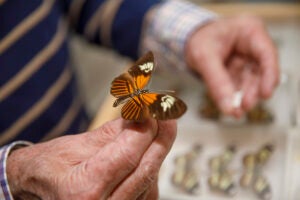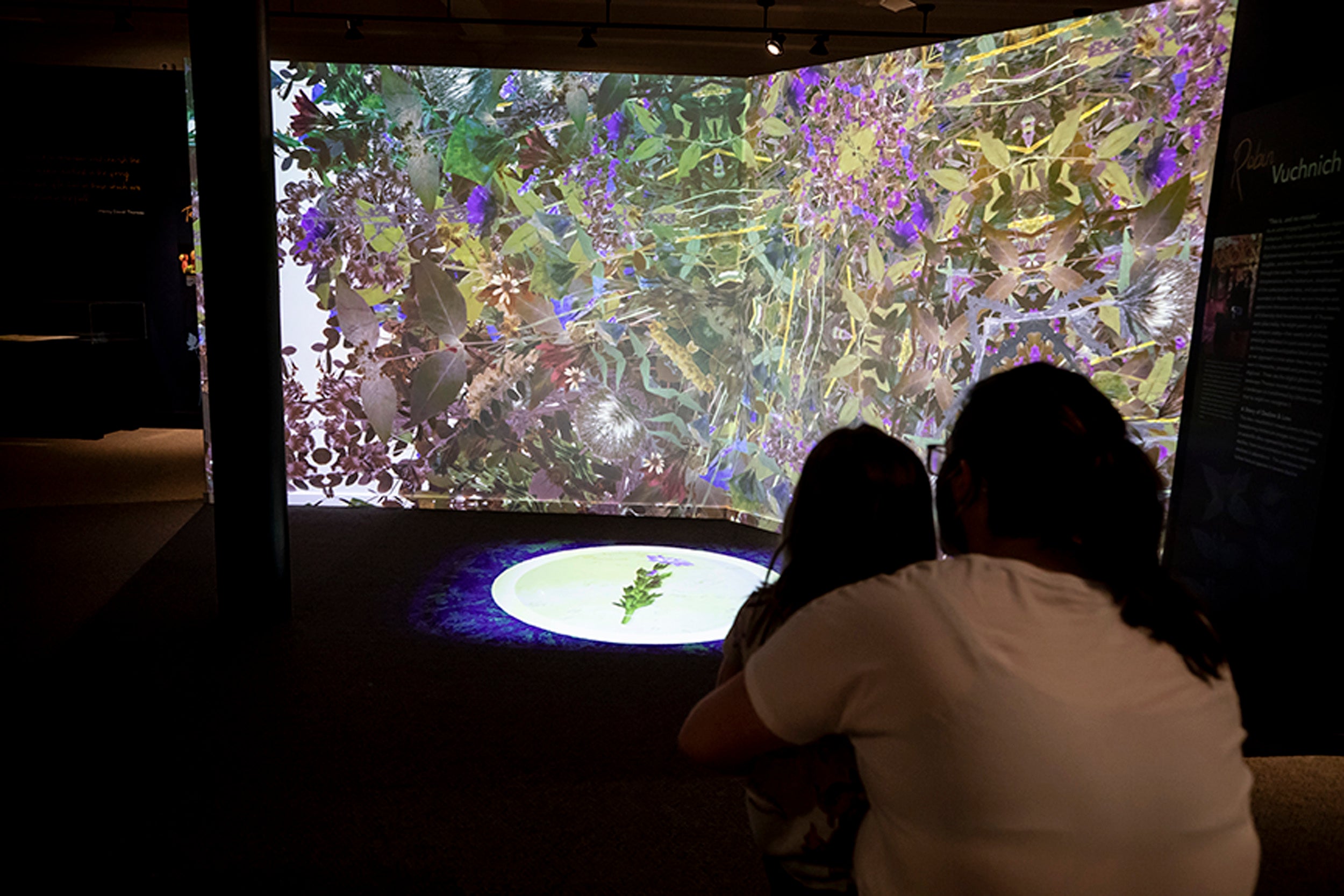
An artistic interpretation of Thoreau’s preserved plants can be seen at the Harvard Museum of Natural History through November 2023.
Photos by Rose Lincoln/Harvard Staff Photographer
Thoreau’s flowers shine light on climate change
‘In Search of Thoreau’s Flowers: An Exploration of Change and Loss’ exhibition marries art and science at Harvard Museum of Natural History
Through his close relationship with the woods of Walden Pond in Concord, Massachusetts, Henry David Thoreau observed the ebb and flow of the natural world first-hand. Prolific in his practice of collecting botanical samples, Thoreau’s journals reveal detailed observations on local flora.
Six hundred forty-eight specimens, long preserved in the Harvard University Herbaria, now serve as the foundation of a new exhibition, “In Search of Thoreau’s Flowers: An Exploration of Change and Loss,” at the Harvard Museum of Natural History.
The exhibition is an immersive multidisciplinary experience that marries art and science through a modern artistic interpretation of Thoreau’s preserved plants. It invites visitors to ask, “What do Thoreau’s findings tell us about what plants are winning, and what plants are losing, in the face of climate change today?”
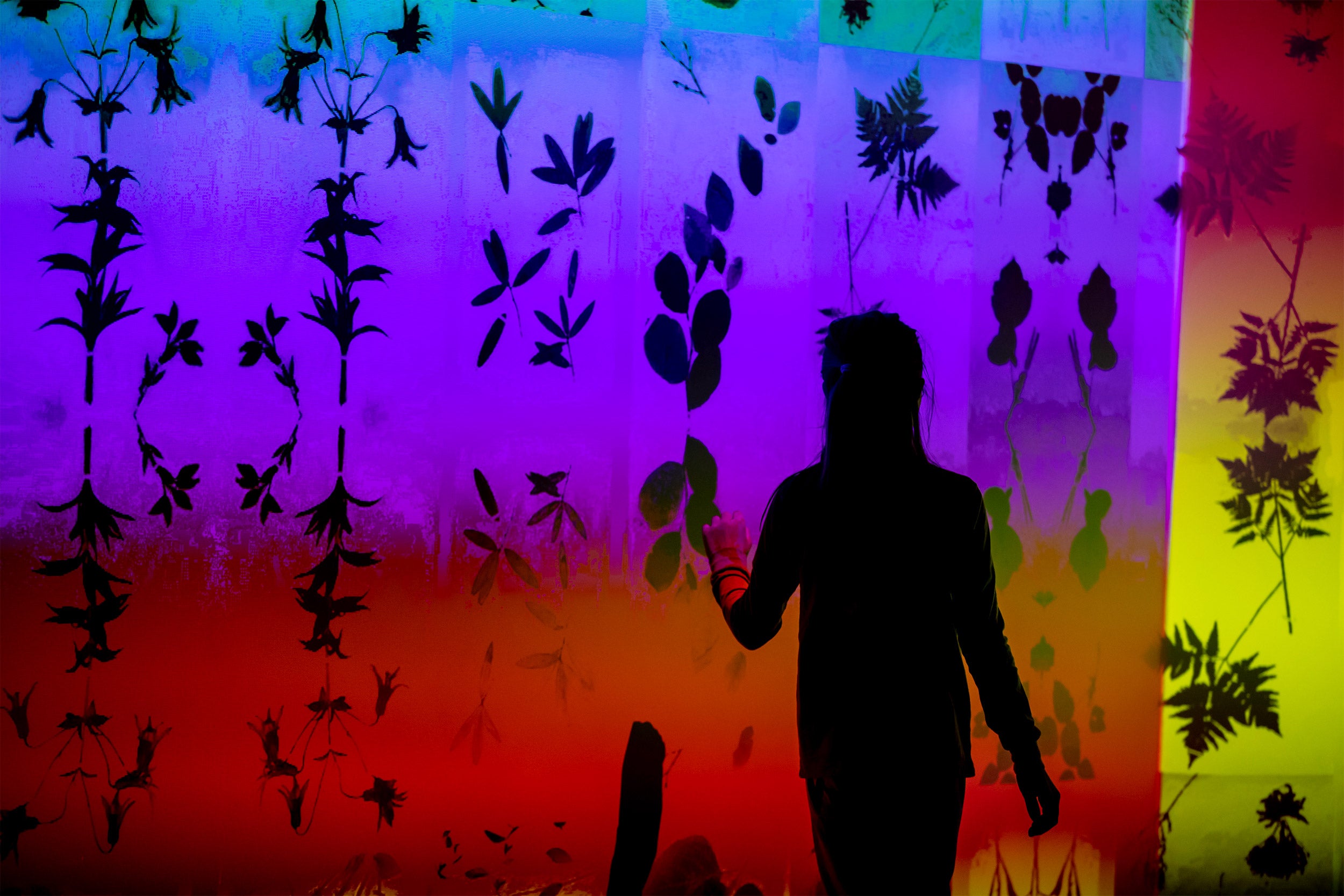
Visitors gain a deeper understanding of how different plant species respond to environmental factors, within and between species. For instance, some plants are sensitive to temperature, while others show less or no sensitivity. This type of data drives the exhibition’s animations and directly impacts our daily lives in the context of agriculture and food production.
Harvard Museums of Science & Culture Executive Director Brenda Tindal underscores the significance of Thoreau’s observations and his indelible impact on society: “philosopher, naturalist, and Massachusetts’ own native son Henry David Thoreau urges us to ‘spend one day as deliberately as Nature.’ Thoreau’s clarion call compels us to intentionally lean into our surroundings and learn from nature — and by extension, the global community to which we all belong.”
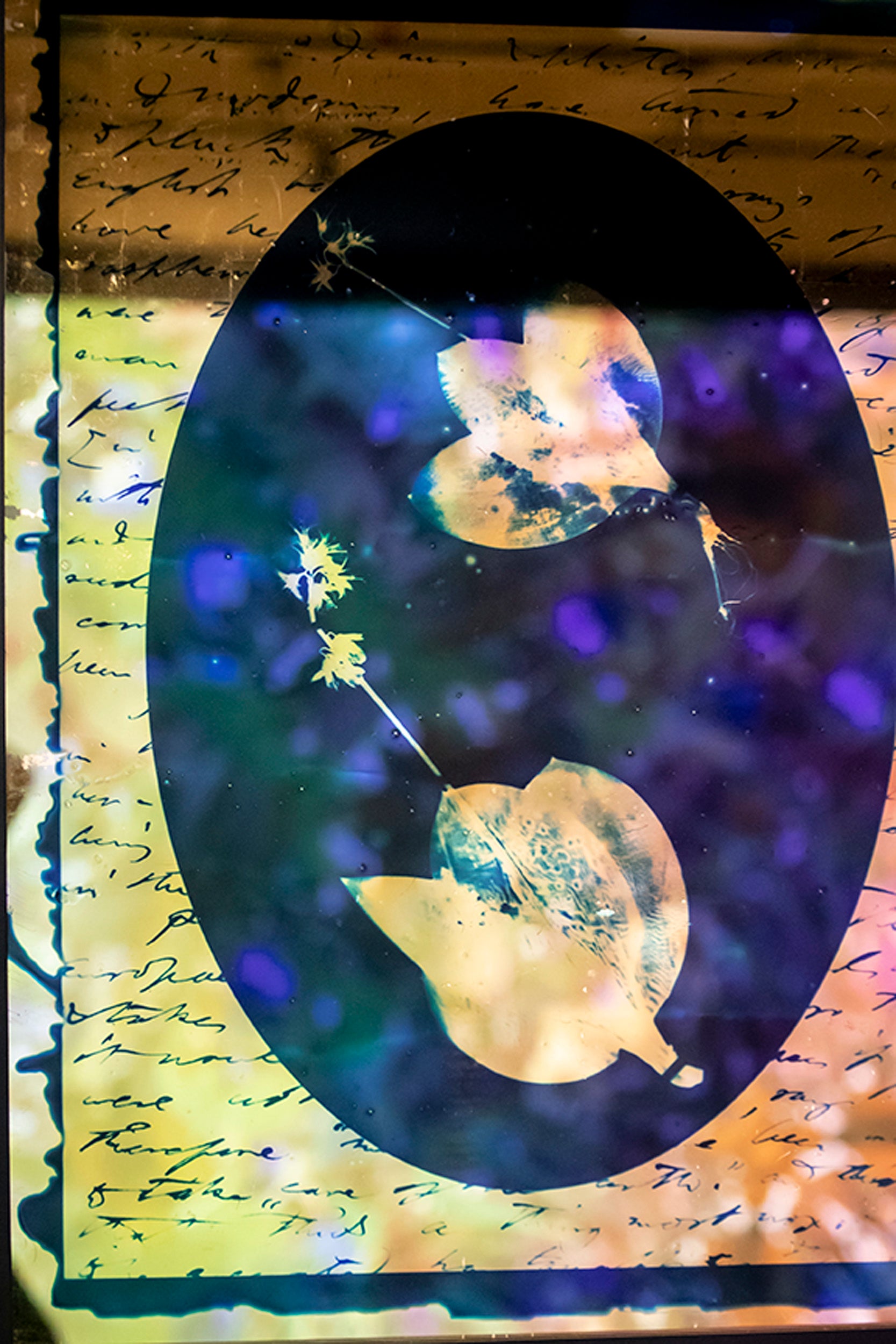
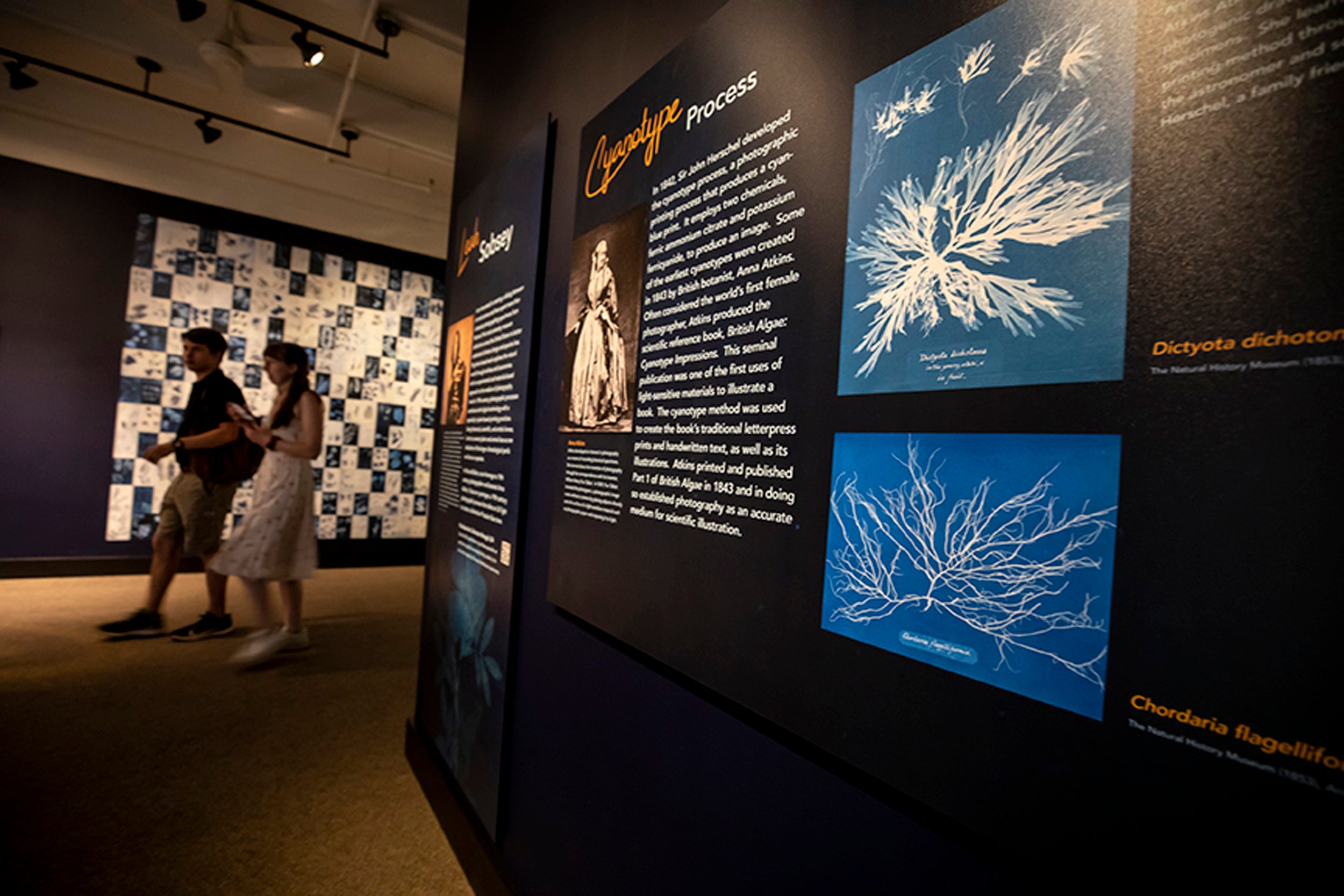
A luminous series of large-scale plant portraits using cyanotype on glass are featured. Artist Leah Sobsey utilized all 648 digitized Thoreau samples.
Those behind the exhibition
Robin Vuchnich, a new media artist, user experience designer, and an assistant professor of the practice at North Carolina State University, leveraged the digitized specimens to craft an immersive experience in the gallery theater. Animations of the herbarium images and soundscapes recorded at Walden Pond offer a compelling visual experience that features scientific data about species in decline.
Leah Sobsey, artist, curator, associate professor of photography, and director of the Gatewood Gallery at the University of North Carolina, Greensboro, created a luminous series of large-scale plant portraits using cyanotype on glass backed with 23k gold, a 19th-century photographic process that relies on UV light to create a distinctive Prussian blue tone. Additionally, Sobsey utilized all 648 digitized Thoreau samples, creating a stunning wallpaper consisting of original cyanotypes and digital imagery that tells a story of the survival and decline of plant specimens.
Preeminent scholars Charles Davis, curator of vascular plants, Harvard University Herbaria, Marsha Gordon, professor, North Carolina State University, and Emily Meineke, assistant professor, University of California, Davis, inform the exhibition’s scientific dimensions and intellectual framework.
To ensure a streamlined admission process, read more about the museum protocols and hours.


